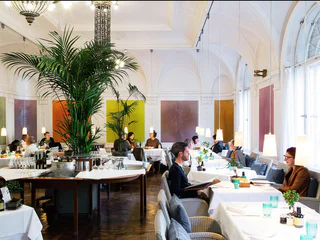
1/8
Restaurant Laurin in the Parkhotel Laurin
Bolzano Centro/Bozen Zentrum, Bolzano/Bozen, Bolzano/Bozen and environs

1/8
Bolzano Centro/Bozen Zentrum, Bolzano/Bozen, Bolzano/Bozen and environs

1/3
Bressanone città/Brixen Stadt, Brixen/Bressanone, Brixen/Bressanone and environs

1/4
Bolzano Centro/Bozen Zentrum, Bolzano/Bozen, Bolzano/Bozen and environs

1/19
Bressanone città/Brixen Stadt, Brixen/Bressanone, Brixen/Bressanone and environs

1/5
Merano/Meran, Meran/Merano, Meran/Merano and environs

1/6
Luson/Lüsen, Lüsen/Luson, Brixen/Bressanone and environs

Dobbiaco Nuova/Neutoblach, Toblach/Dobbiaco, Dolomites Region 3 Zinnen

Firmiano/Sigmundskron, Bolzano/Bozen, Alto Adige Wine Road

1/2
Caldaro Paese/Kaltern Dorf, Kaltern an der Weinstraße/Caldaro sulla Strada del Vino, Alto Adige Wine Road

1/3
Bolzano Centro/Bozen Zentrum, Bolzano/Bozen, Bolzano/Bozen and environs

1/3
Merano/Meran, Meran/Merano, Meran/Merano and environs

1/8
Bolzano Centro/Bozen Zentrum, Bolzano/Bozen, Bolzano/Bozen and environs

1/2
Bolzano Centro/Bozen Zentrum, Bolzano/Bozen, Bolzano/Bozen and environs

1/3
Merano/Meran, Meran/Merano, Meran/Merano and environs

1/5
Burgusio/Burgeis, Mals/Malles, Vinschgau/Val Venosta

Magrè s.S.d.V./Margreid a.d.W., Margreid an der Weinstraße/Magrè sulla Strada del Vino, Alto Adige Wine Road

1/11
Tarres/Tarsch, Latsch/Laces, Vinschgau/Val Venosta

Tramin an der Weinstraße/Termeno sulla Strada del Vino, Alto Adige Wine Road

1/8
Bressanone città/Brixen Stadt, Brixen/Bressanone, Brixen/Bressanone and environs

Fiè/Völs, Völs am Schlern/Fiè allo Sciliar, Dolomites Region Seiser Alm

1/2
Dobbiaco Nuova/Neutoblach, Toblach/Dobbiaco, Dolomites Region 3 Zinnen

1/2
Magrè s.S.d.V./Margreid a.d.W., Margreid an der Weinstraße/Magrè sulla Strada del Vino, Alto Adige Wine Road

1/4
Lana/Lana, Lana, Meran/Merano and environs

1/3
Merano/Meran, Meran/Merano, Meran/Merano and environs

1/8
Sluderno/Schluderns, Schluderns/Sluderno, Vinschgau/Val Venosta

1/5
Tramin an der Weinstraße/Termeno sulla Strada del Vino, Alto Adige Wine Road

1/3
Merano/Meran, Meran/Merano, Meran/Merano and environs

Teodone/Dietenheim, Bruneck/Brunico, Dolomites Region Kronplatz/Plan de Corones

1/4
Sluderno/Schluderns, Schluderns/Sluderno, Vinschgau/Val Venosta

1/8
Senale/U.L. Frau i.W., U.L.Frau i.W.-St. Felix/Senale-S.Felice, Meran/Merano and environs